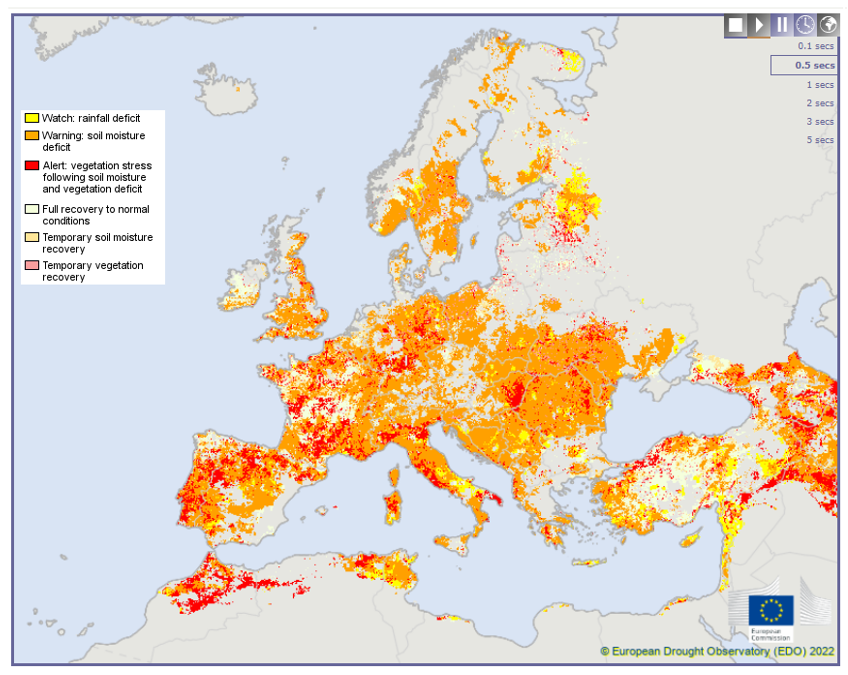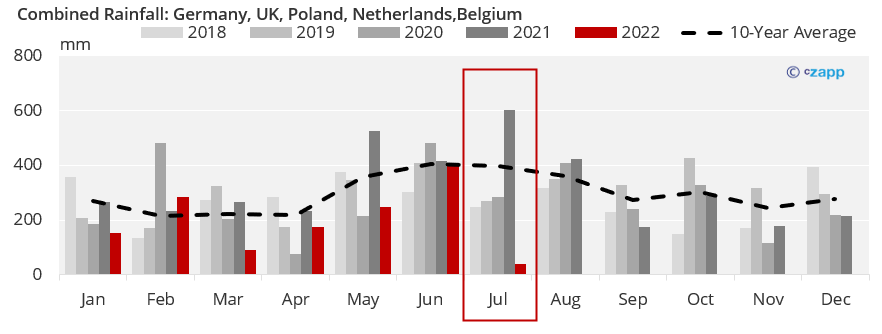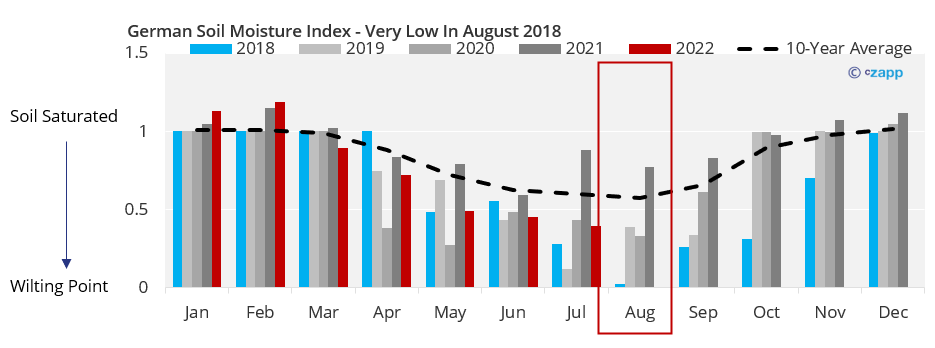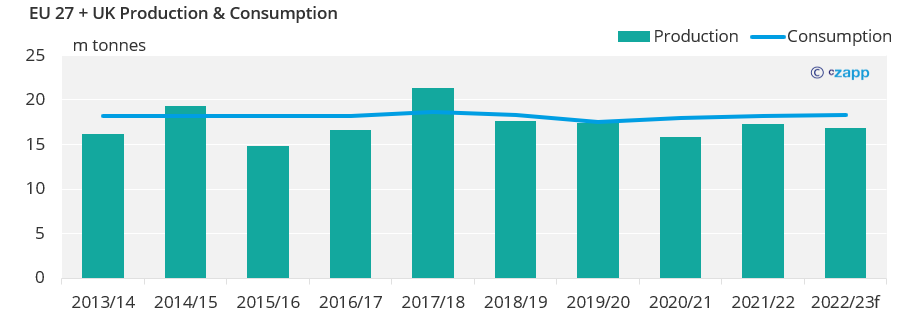Insight Focus
- Much of Europe is facing below normal vegetation growth and lack of soil moisture.
- In 2018/19, sugar yields were 11% below average in areas with similar conditions.
- This sort of yield loss across the EU & UK could reduce sugar production by up to 2m tonnes.
If you’d like us to answer one of your questions in an upcoming edition, please email will@czapp.com.
Hot Dry Weather Putting Crops At Risk
High temperature records are being broken across much of Europe. At the same time rainfall has been well below normal. The European Drought Observatory’s indicator now shows that nearly all of Europe is facing a soil moisture deficit (orange). Many areas are facing a red alert which means that a soil moisture deficit is accompanied by below normal vegetation growth.
Combined Drought Indicator (CDI) maps

By the end of June, the European Commission had already started to reduce yield outlooks for a variety of crops such as soft wheat, barley and rapeseed due to the dry spring. There has also been very limited rainfall since then: with just 10 days left in July, rainfall across Europe has only been a fraction of normal.

Sugar Beet: What Can We Learn From Previous Years?
A lack of soil moisture and high temperatures are undoubtedly a concern for the sugar beet crop. Without enough water, beet growth is likely to slow. High temperatures will also cause the plant to wilt, again affecting its growth.
It was a similar story in the summer of 2018 across Northwest Europe, which is where most sugar beet is grown. For example, in Germany soil moisture was extremely low and almost at wilting point by August 2018.

This caused a lot of stress to the beet in the ground; sugar yields dropped below 10.75 tonnes a hectare, an 11% drop compared to average the average of over 12.1. To put this into perspective, a yield loss of this size across the whole of EU27 +UK would reduce sugar production to almost 2m tonnes below the average.
Ahead of the 2019/20 (summer 2019) season soil moisture wasn’t much greater and was very low in July. Once again sugar yields were below average at 11.3 tonnes/ha.
Although both of these years followed the EU ban on the use neonicotinoids to prevent beet yellow virus, there were no major outbreaks reported in either of these years that would have impacted yields.

Therefore, we are concerned that without rain soon there could be sharp losses of sugar production in Europe this season. At a time when EU sugar production is already struggling due to shrinking area and supply is quite tight this could be quite significant for the EU and global sugar market.

Other Insights That May Be of Interest…
Trade Flows: Raw Sugar Deficit Looming in Q4














